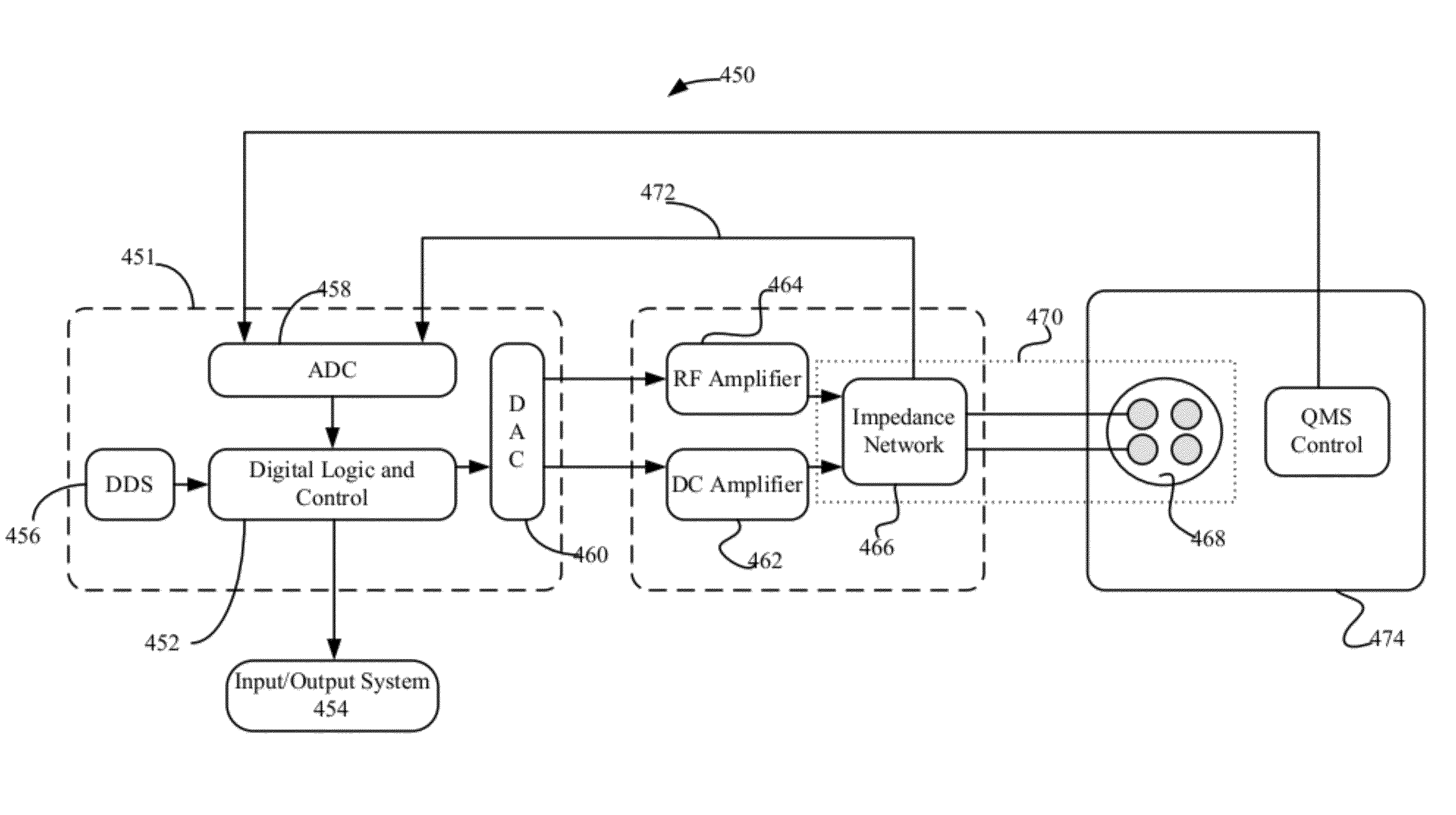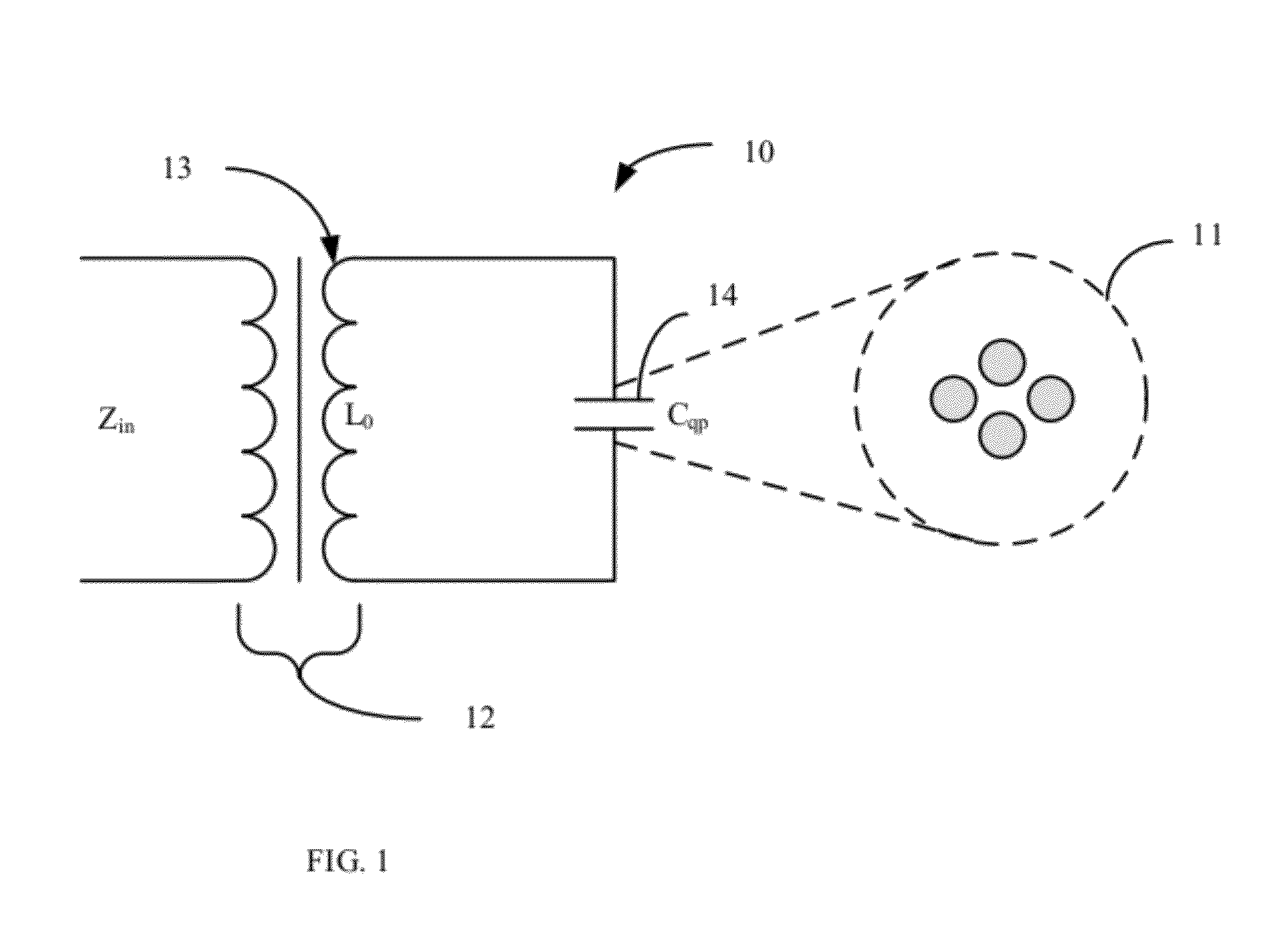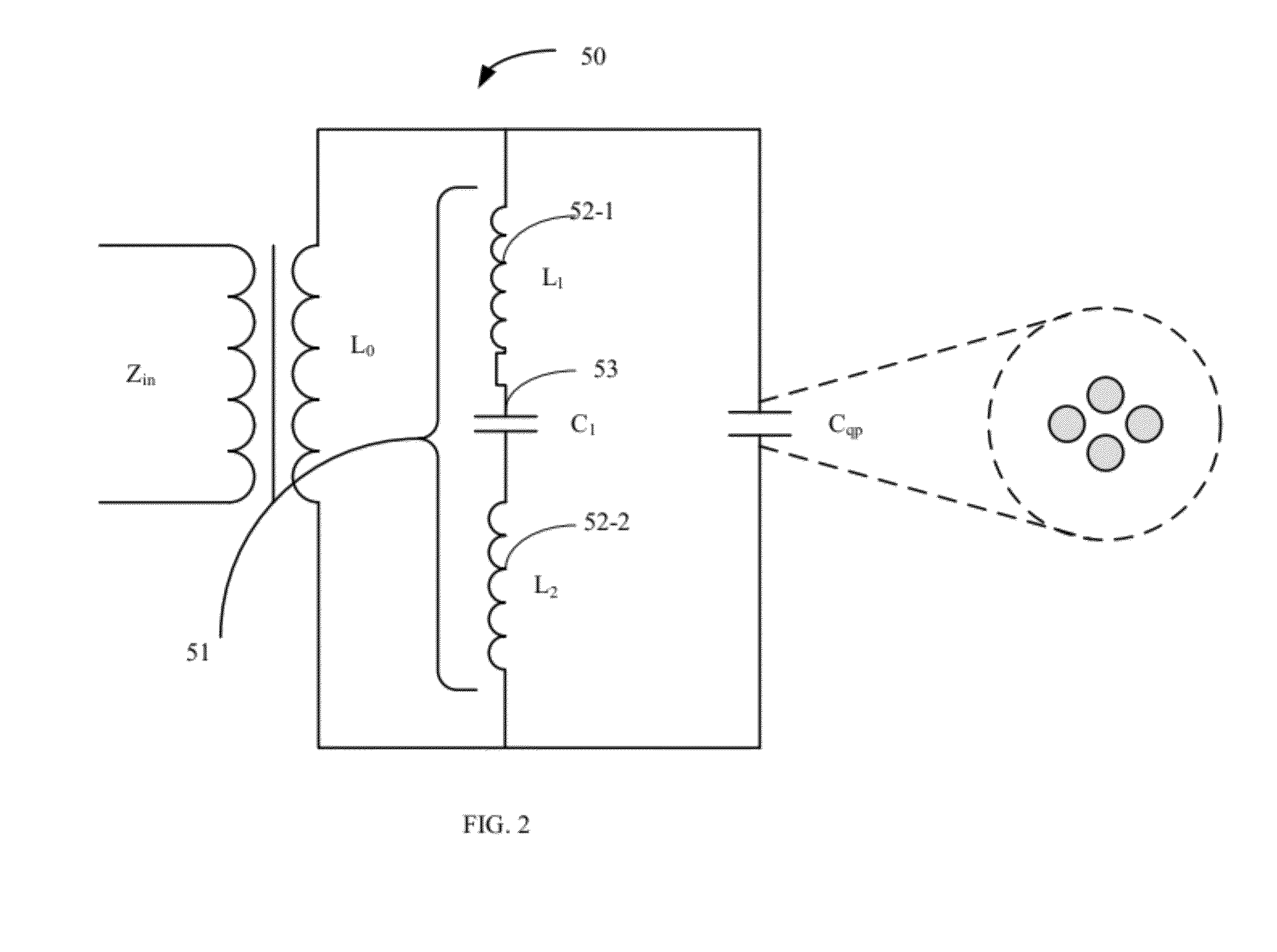Auxiliary frequency parametric excitation of quadrupole mass spectrometers
a mass spectrometer and parametric excitation technology, applied in the field of mass spectrometry, can solve the problems of numerous deficiencies of mass spectrometers, difficulty in achieving and maintaining a stable magnetic field, and unique design challenges of space use, so as to improve the dynamic range of excitation voltage amplitudes, improve power efficiency, and reduce power consumption
- Summary
- Abstract
- Description
- Claims
- Application Information
AI Technical Summary
Benefits of technology
Problems solved by technology
Method used
Image
Examples
Embodiment Construction
[0023]An example implementation includes a feedback control system to enable a QMS to efficiently achieve increased range, accuracy, and resolution at desired ω / Ω ratios. The system achieves this by tuning the frequency dependent characteristics of the QMS at the desired fundamental frequency Ω and at the auxiliary frequency ω. A closed-loop tuning improves the stability of the measurement by adjusting for temporal drifts in the operating characteristics of the QMS and variations in operating temperature.
[0024]FIG. 1 is a circuit schematic representation of an example tank circuit 10. The tank circuit 10 is comprised of a secondary coil (inductor) 13 of transformer 12, the secondary coil 13 having an inductance Lo and a representative capacitive element 14 having a capacitance Cqp. The capacitive element 14 represents a capacitor formed by pairs of conducting rods 11 used to create an electric field in an example QMS system and the capacitance Cqp represents the intra-quadrupole rod...
PUM
 Login to View More
Login to View More Abstract
Description
Claims
Application Information
 Login to View More
Login to View More - R&D
- Intellectual Property
- Life Sciences
- Materials
- Tech Scout
- Unparalleled Data Quality
- Higher Quality Content
- 60% Fewer Hallucinations
Browse by: Latest US Patents, China's latest patents, Technical Efficacy Thesaurus, Application Domain, Technology Topic, Popular Technical Reports.
© 2025 PatSnap. All rights reserved.Legal|Privacy policy|Modern Slavery Act Transparency Statement|Sitemap|About US| Contact US: help@patsnap.com



